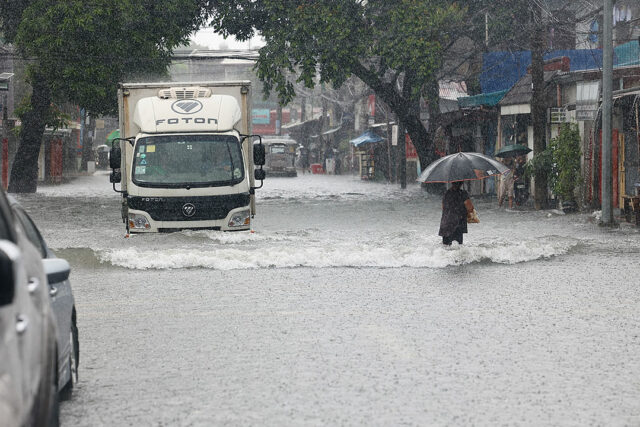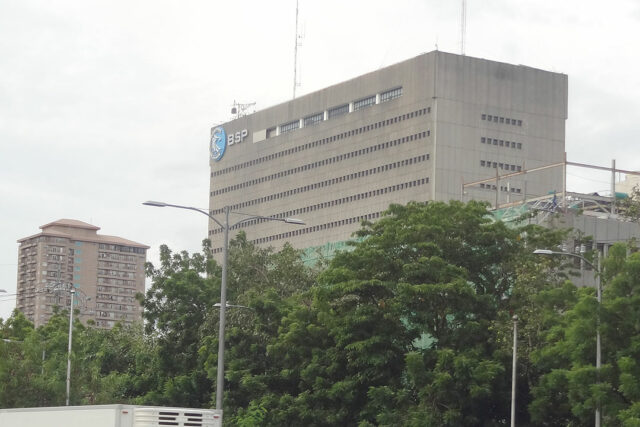Stuff to Do (10/25/24)
FDCP holds 8th Film Industry Conference
THE 8th Film Industry Conference of the Film Development Council of the Philippines (FDCP) is ongoing at Lanson Place Manila in Mall of Asia, Pasay City. The event brings together local filmmakers to discuss the latest trends, opportunities, and platforms in the industry. The last three sessions — on film archiving and restoration, government support of cinema, and the future of globalization and international filmmaking — are taking place on Oct. 25, 1 p.m. onwards. They will also be streamed live on the FDCP website. Online participants can register at fdcp.ph/FIC2024-02 while onsite attendees may sign up via fdcp.ph/FIC2024-01. For more information follow the Film Industry Conference pages on Facebook, Twitter, and Instagram.
Shangri-La Plaza brings kid’s bedtime tales to life
THE fantastical will take center stage at Shangri-La Plaza’s Starlight Tales: Halloween at the Shang. Taking place on Oct. 26 and 27, the weekend event includes colorful DIY projects courtesy of The Crafters Marketplace at the mall’s East Atrium. There will also be trick-or-treat stops and game booths around the mall. The main event will be the storytelling session with Make Believe Productions at the Grand Atrium, using shadow puppetry to capture children’s imaginations.
LEGO Certified Store offers passport program
THE brand-new LEGO Certified Store in Ayala Malls Manila Bay will be having its grand opening on Oct. 26. At the launch, all visitors will have a chance to claim a free LEGO Passport, a program for families and fans to document their LEGO adventures by collecting unique stamps from various LEGO stores. This limited-edition passport is only available at the store until Nov. 8. At the grand opening, shoppers can also enjoy exclusive bundle promos.
Zombie run, anime costume tilts at Araneta City
IT IS Halloween fun at Quezon City’s Araneta City this weekend. On Oct. 27, zombies will invade Araneta City’s aRUNeta Run Club, with participants challenged to outrun the athletic zombies in a special Halloween edition of the regular run. Those who “get out alive” will be able to win treats and prizes. It kicks off at 5 a.m. at the Green Gate, Smart Araneta Coliseum. On the same day, there will also be an anime-themed Halloween costume contest at the Quantum Skyview of Gateway Mall 2. Participants can join either the “Kiddie Cosplay Anime” Category or the “Group Cosplay Showcase” Category to win up to P10,000 worth of prizes. The event is set to start at 1 p.m. Meanwhile, pets can join in the fun at the Pet Costume Contest over at the Ali Mall Activity Area, at 2 p.m.
10th Shorts and Briefs Theater Fest delayed
DUE to Typhoon Kristine, the opening of the Shorts and Briefs Theater Festival has been canceled. All ticket holders will be accommodated for performances from Oct. 25 to 27 at the Tanghalang Ignacio Gimenez (Black Box Theater), CCP Complex, Pasay City. This year sees the festival celebrate its 10th anniversary, expanding to playwrights, directors, performers, and songwriters. Musicals include: Karlo Guevarra and Migui Moreno’s Sakto Lang; Aaron Alsol and Aaron Vincent Jimenez’s Ang Kwento ng Bubuyog at Paru-paro; Martin Sarmenta and Jiezl Virmy Chua’s Tala; Axl Diego and Ray Rana’s Disyembre; Gerard De Leon and Hazel Madronero’s Nakasilip na Bituin; and John Custer and Paulito Del Mundo’s Kasloy. A P600 ticket provides entry to all six musicals. Showtimes are at Oct. 25, 8 p.m., and Oct. 26 and 27, 2 and 7 p.m. For tickets, contact 0954-395-3902.
Robinsons Malls hosts Halloween celebrations
THIS October, Robinsons Malls’ “Halloween Chills & Thrills” will take place at several Robinsons Malls nationwide. The Children’s Costume Contest from Oct. 26 to 31 welcomes young barkadas (from three to eight kids each) in a “Squad Edition” theme. Horror movie fans can also catch spine-tingling films like Saw X and 13 Exorcisms at the HorrorKada Fest in participating Robinsons Movieworld cinemas from Oct. 30 to Nov. 5, with tickets priced at just P120. Pet owners can enter their fur babies in the “Horror Pets-tival,” featuring a pet costume contest and other activities.
Newport presents Halloween-themed offerings
AT Newport World Resorts, several establishments will be celebrating Halloween. At the Kusina Sea Kitchens of the Hilton Manila on Oct. 26 and 27, there will be spine-tingling dishes and kiddie activities including face painting, DIY Cupcake Decorating, and trick or treating. Marriott Cafe at Manila Marriott Hotel will have its own counterpart of this on Oct. 27, with the “Smorgasbord: The Big Sunday Halloween Buffet,” complete with trick or treat activities for kids. The Newport Mall itself will have the “Halloween Spectacle” on Oct. 27, with magic shows, trick or treat adventures, and more starting from 2 p.m. at the Newport Cinemas.
Ben&Ben releases arena rock anthem
FILIPINO band Ben&Ben is heralding the start of a new era with the release of “Triumph,” the first single off their upcoming third album, The Traveller Across Dimensions, due Nov. 29 via Sony Music Entertainment. A rock anthem that empowers listeners to work on quieting the voices inside their heads, “Triumph” is penned by the nine-piece act’s Paolo and Miguel Benjamin. It is inspired by the struggles that the band has experienced over the years, according to the singer-songwriters. It is also the first song that they’ve arranged and collaborated on with their producer and friend, Ziv. “Triumph” is out now on all digital music streaming platforms.
James Reid releases new pop single
THE latest single of Filipino celebrity James Reid, titled “Mirasol,” is out now via Sony Music Entertainment. The song is about falling in love with a sunflower and how romance is something that requires appreciation, protection, and understanding, according to Mr. Reid. “Love is an organic process and needs to grow naturally,” he said in a statement. The song is co-written by Alison Shore, an R&B artist, and produced by One Click Straight’s Tim Marquez, a frequent collaborator of Mr. Reid. “Mirasol” serves as the third single off his upcoming EP, jgh, which is slated to drop on Nov. 22. The track is out now on all digital music streaming platforms.



















